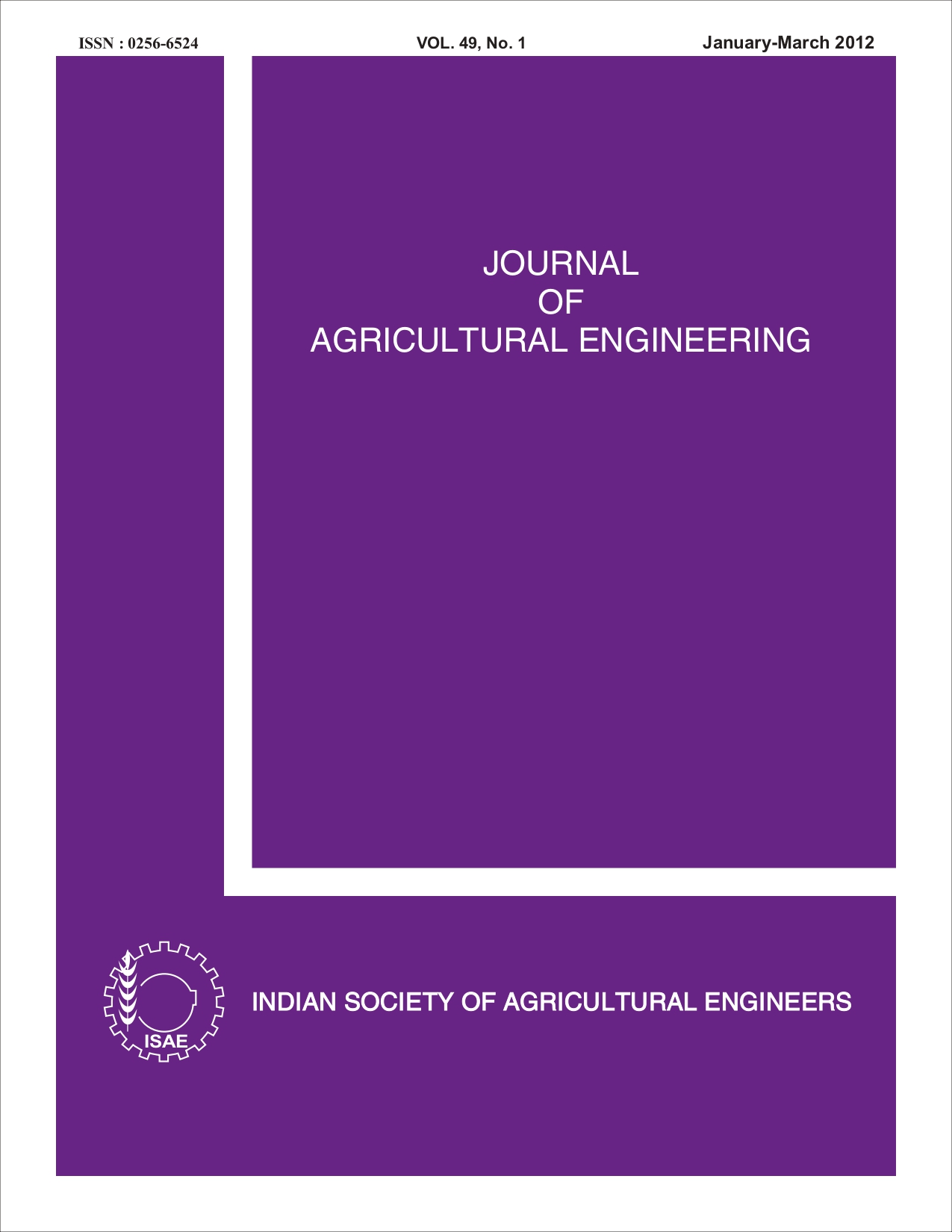Study on the Impact and Adoption of Soil and Water Conservation Technologies in Eastern Ghats of India
DOI:
https://doi.org/10.52151/jae2012491.1469Keywords:
Land degredation , soil conservation measures , bio-engineering measures, formers’ participationAbstract
Land degradation is a serious problem world-over and need immediate attention. The eastern Ghats of India spreading over 19.8 Mha have suffered severe erosion due to shifting cultivation, deforestation, over grazing and faulty land use. Site specific soil and water conservation measures were implemented in Kokriguda watershed, a representative of the eastern Ghats of India, for monitoring their impact on resource conservation, productivity and income of tribal farmers as well as their adoption by the tribal farmers. Cost effective soil and water conservation (SWC) measures viz., contour and stone bunds, trench-cum-bunds with vegetative barriers and hedge rows, sunken ponds, loose boulder check dams etc. were constructed at suitable locations. Bio-engineering measures were generally preferred. These land treatments resulted in reduction in soil loss and runoff by 82 and 51%, respectively, rise in water table by 0.32 m, and increase in crop yield by 15 to 38% within four-year period. Irrigated area increased from 2 to 35 ha due to water resources developed. Total income from vegetable cultivation using harnessed water for the whole village increased to Rs. 1.4 lakh.year-1. Farmers’ participation in soil and water conservation activities was appreciable, and their contribution to different activities varied from 5 to 10 per cent. However, education and support services to convince the farmers about the problem of soil degradation and training on soil conservation practices is essential for large scale adoption of soil and water conservation measures.References
Anon. 2001. Strategic Research and Extension Plan of Koraput district. National Institute of Agricultural Extension Management (MANAGE), Rajendranagar,Hyderabad – 500 030, AP, India.
Chauhan K P S. 1998. Framework for conservation and sustainable use of biological diversity. Action plan for the Eastern Ghat region. The Eastern Ghat, Proc. of the National Seminar on Conservation of Eastern Ghats, Andhra University, Visakhapatnam.
Dhruva Narayana V V; Sastry G; Patnaik U S. 1990. Watershed Management, Indian Council of Agricultural Research, New Delhi.
Mukherji S D. 1998. Forestry situation in Eastern Ghats. Proc. of National Seminar on Conservation of Eastern Ghats, Andhra University, Visakhapatnam, 247-255.
Patnaik U S; Choudhury P R; Sudhishri S; Dass A; Paikaraya N K. 2004. Participatory Watershed Management for Sustainable Development in Kokriguda Watershed, Koraput, Orissa (IWDP, MORD, GOI), CSWCRTI, RC, Sunabeda, Koraput, pp: 123.
Sudhishri S; Patnaik U S; Dass A; Choudhury P R. 2002. Water resource development in Koraput region of Orissa. Proc. 2nd International Agronomy Congress, New Delhi, Dec. 26-30, Vol II, 1358-1359.
Sudhishri S; Patnaik U S; Mahapatra N. 2003. Rainfall– runoff modelling for Upper Kolab catchment of Orissa. J. Applied Hydrology, XVI (3), 5-9.
Sudhishri S; Panaik U S; Dass A; Dash B K. 2006. Participatory water resource development for sustainable tribal agriculture- A case study. Ind. J. Soil Cons., 34(1),60-64.














